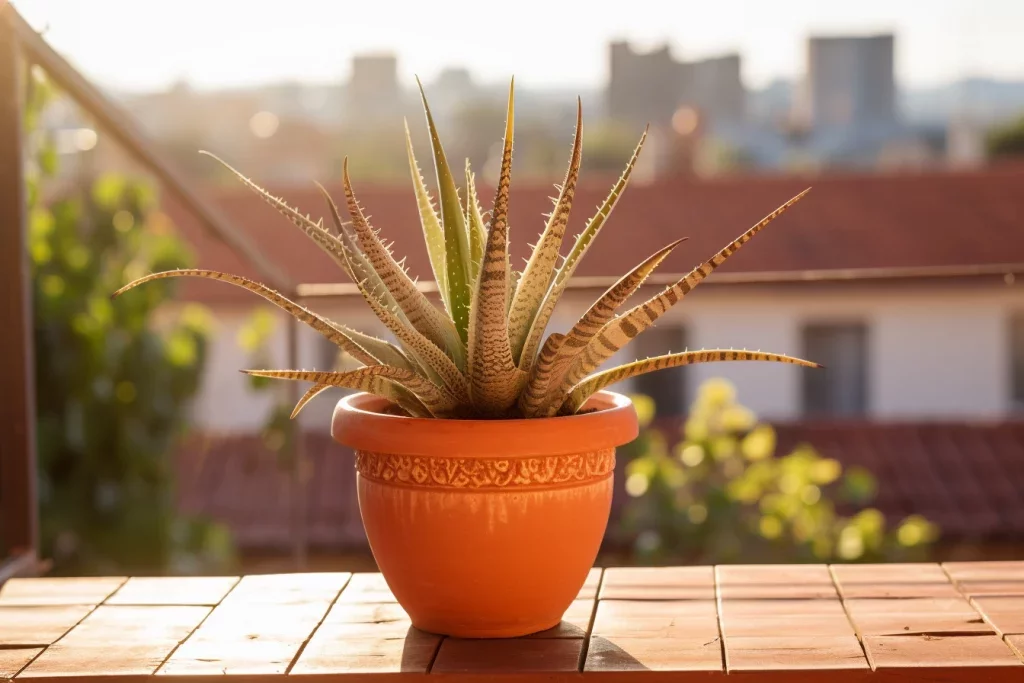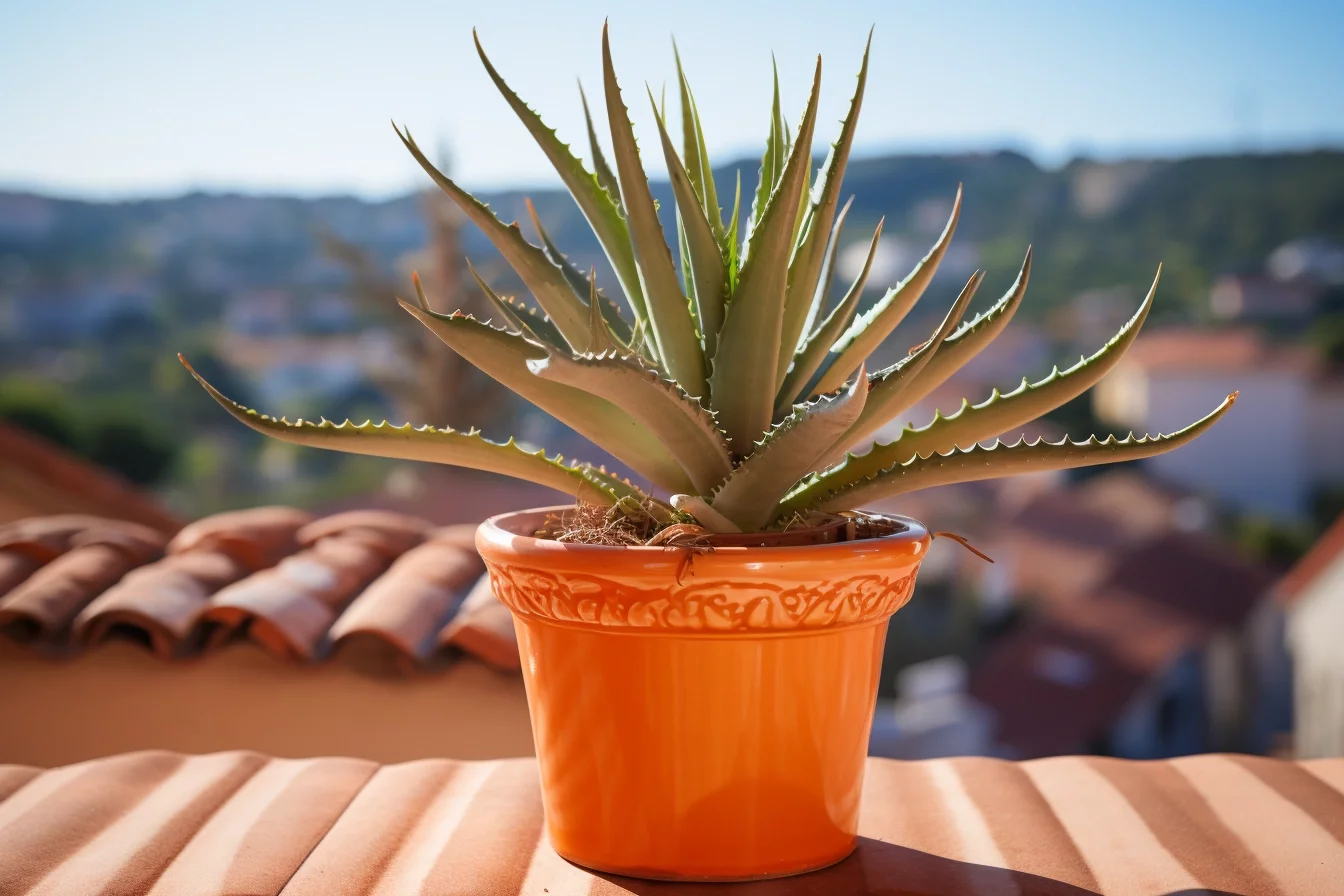The Wonders of Aloe Vera
Aloe Vera, scientifically known as Aloe barbadensis miller, is a wonder plant that has graced our homes and lives for centuries. Known for its thick, spiky leaves that store clear gel, Aloe Vera is more than just a decorative succulent; it’s a plant rich in history and benefits. 🌱💚

A Brief History and Its Many Names
Aloe Vera, also known as the “Burn Plant”, “Lily of the Desert”, or simply “Aloe,” has been a cherished plant across various cultures. With over 500 species of Aloe, this particular one, Aloe barbadensis, stands out for its health and skincare benefits.
Aloe Vera’s Versatile Uses
This versatile plant is not just a pretty face in the plant kingdom. Its uses range from skincare, such as treating sunburn and acne, to internal health benefits like aiding in digestion. The efficacy of Aloe Vera is backed by both historical anecdotes and modern scientific evidence.
Growing and Caring for Your Aloe Vera Plant
Care Essentials
Caring for an Aloe Vera plant is straightforward, making it ideal for both novice and expert gardeners. Here’s what you need to keep in mind:
- Sunlight: Burn Plant thrives in bright, indirect sunlight. Placing your plant near a south or west-facing window is ideal.
- Watering: Water your Aloe sparingly. Allow the potting soil to dry out completely before watering again. Overwatering can lead to root rot, a common issue with succulents.
- Potting and Repotting: Use well-draining soil and a pot with drainage holes. Repot your indoor plant every couple of years or when it outgrows its pot.
Propagation: Growing More Aloe
Aloe plant reproduces through offsets, or “pups,” that grow from the base of the mother plant. You can easily repot these to grow new Aloe plants. It’s a great way to expand your Aloe collection or share with friends.
9 Health Benefits of Aloe Vera
- Soothing Sunburn: Aloe Vera gel has cooling properties and is commonly used to soothe sunburned skin.
- Enhancing Skin Health: Regular application of Aloe gel may improve skin elasticity and help reduce acne.
- Natural Laxative: Aloe latex, the yellow substance found under the plant’s skin, has laxative effects.
- Hydrating Aloe Vera Juice: Drinking Aloe Vera juice is a great way to stay hydrated and can aid in digestion.
- Oral Health: Studies suggest that succulent mouthwash can be effective for oral health, potentially reducing dental plaque.
- Rich in Nutrients: Aloe Vera contains various vitamins, minerals, and antioxidants, contributing to overall health.
- Complementary Therapy: Aloe Vera is recognized by the National Institutes of Health as a complementary approach to health and wellness.
- Blood Sugar Management: Some preliminary studies indicate Aloe Vera might help stabilize blood sugar levels.
- Anti-inflammatory Properties: Aloe Vera may help reduce inflammation and has been used in traditional medicine for this purpose.
Tips and Tricks for Aloe Vera Plant Care
- Light and Location: This plant loves sunlight but can get sunburned. Monitor the light it receives throughout the day.
- Watering Wisdom: Overwatering is a common misstep. Water only when the soil is dry to avoid root rot.
- Feeding Your Plant: During the growing season (spring and summer), feed your Aloe plant with a half-strength liquid fertilizer every month.
- Troubleshooting Common Problems: If you notice brown tips or yellow leaves, this could be a sign of overwatering, under-watering, or too much direct sun.
- Keep Your Plant Healthy: Regularly remove any dead leaves at the base of the plant to encourage growth and prevent disease.
Understanding the Science Behind Aloe barbadensis miller
- Scientific Evidence: Numerous studies have explored the therapeutic effects of Aloe Vera, from its application in skincare to its potential internal health benefits.
- Safety and Precautions: While this succulent is generally safe, oral use of Aloe latex may have adverse effects. It’s important to follow guidelines for safe consumption and topical use.
- FDA and Aloe Vera: The Food and Drug Administration (FDA) monitors Aloe preparations, ensuring safety in its use in products and medicines.
Aloe Vera in Your Home and Garden
Indoor and Outdoor Cultivation
Burn Plant is a resilient plant that can be grown both indoors and outdoors in the right conditions. If you live in a warmer climate, your Aloe can thrive outside during the summer.
Decor and Aesthetics
With its sculptural quality, Aloe Vera adds a touch of green elegance to any space. Whether placed on a sunny kitchen windowsill or in an outdoor garden, it’s an attractive plant that complements various decor styles.
A Plant for Every Plant Parent
Whether you’re an experienced plant parent or new to the world of gardening, Aloe is a fantastic choice. It’s forgiving, easy to care for, and provides a plethora of benefits, making it one of the most beloved plants around the globe.
Is more than just a succulent; it’s a plant of healing, beauty, and resilience. With proper care, it can be a rewarding addition to your home, offering both aesthetic pleasure and health benefits.

Frequently Asked Questions🌱🌟
1. What Are the Different Uses of Aloe Vera?
Aloe Vera, famous for its succulent nature and medicinal benefits, offers a wide range of uses. When applied topically, the gel from its leaves soothes skin irritations such as sunburn and acne. For internal use, people consume this succulent juice, made from both the gel and whole leaf extract, to aid digestive health. However, it’s important to consume it carefully due to potential side effects. Throughout history, various cultures have utilized Aloe for its healing properties.
2. How Do I Care for My Aloe Vera Plant?
Caring for Aloe barbadensis, is quite straightforward, which makes it an excellent choice for both novice and experienced plant lovers. Start by placing it in a spot with plenty of indirect sunlight. Then, water the plant whenever the topsoil feels dry, and always use well-draining potting soil. Importantly, be careful not to overwater, as this can lead to root rot. 🚿💡
3. Can I Use Aloe Vera Gel Directly from the Plant?
Yes, you can use Aloe Vera gel directly from the plant. Cut a small section of a succulent leaf and squeeze out the gel. It’s perfect for topical use on minor cuts and burns. Aloe is effective due to its natural soothing and anti-inflammatory properties. 🌱💚
4. What Are the Health Benefits of Consuming Aloe Vera?
The potential health benefits of Aloe include aiding in digestion and possibly helping in blood sugar management. Oral this succulent products, like juice and supplements, have been the subject of research. However, be mindful that oral consumption of Aloe, especially in large amounts, can have adverse effects. Always consult a healthcare provider before starting any new supplement. 🍹🌿
5. How Many Species of Aloe Exist?
There are over 500 species of Aloe, each with unique characteristics. Besides the common Aloe barbadensis miller, other popular types include Aloe arborescens and Aloe ferox. These species vary in size, shape, and use. 🌍🌵
6. Can Aloe Vera Help with Oral Health?
Preliminary studies on the antiplaque efficacy of Burn Plant mouthwash found it to be effective in reducing dental plaque. This natural alternative is gaining popularity, but more research is needed to fully understand its benefits. 🦷🌱
7. Is It Safe to Grow “Burn Plant” Outdoors?
This succulent can be grown outdoors in the summer in regions where temperatures are warm and there is no risk of frost. This short-stemmed plant thrives in warm, sunny conditions. If you live in a cooler climate, it’s best to keep your Aloe Vera as a potted plant indoors. ☀️🌿
8. What Should I Do if My Aloe Plant’s Leaves Start to Droop?
Drooping leaves in Aloe barbadensis miller may indicate overwatering or poor lighting conditions. Ensure the plant is in a well-lit area and allow the soil to dry out between watering. Remember, Aloe Vera is a succulent and stores water in its leaves, so it doesn’t require frequent watering. 💧🍂
9. How Can I Propagate Aloe Vera?
To propagate plant, remove the pups or small offsets that grow at the base of the mother plant. Plant these in a separate pot with a suitable potting mix.
10. Can I Use Aloe Vera for Skin Care?
Absolutely! Aloe gel is widely used in skincare for its moisturizing and soothing properties. It’s effective for treating sunburn, minor cuts, and skin irritation. The topical use of this plant is supported by both anecdotal evidence and scientific research. 🧴🌿
11. What Are the Signs That My Aloe Vera Plant is Healthy?
A healthy Aloe Vera plant has plump, green leaves that stand erect. The plant thrives when it’s watered correctly and placed in a location with adequate sunlight. New plant growth and occasional flowering also indicate good health. 🌺💪
12. Is “Burn Plant” Easy to Maintain?
Yes, this houseplant is considered one of the easiest plants to care for. This makes it an excellent choice for those new to gardening or those who prefer low-maintenance plants. With basic care, Aloe can thrive and bring beauty to your home. 🌱👌
13. What Should I Do if I Notice Pests on My Aloe barbadensis miller Plant?
If you notice pests like scale insects or red spider mites on your Aloe barbadensis miller, isolate the plant to prevent spreading. Clean the leaves with a soft, damp cloth and treat the plant with a suitable pesticide if necessary. Regular checks will help keep your plant healthy. 🐞🌱

